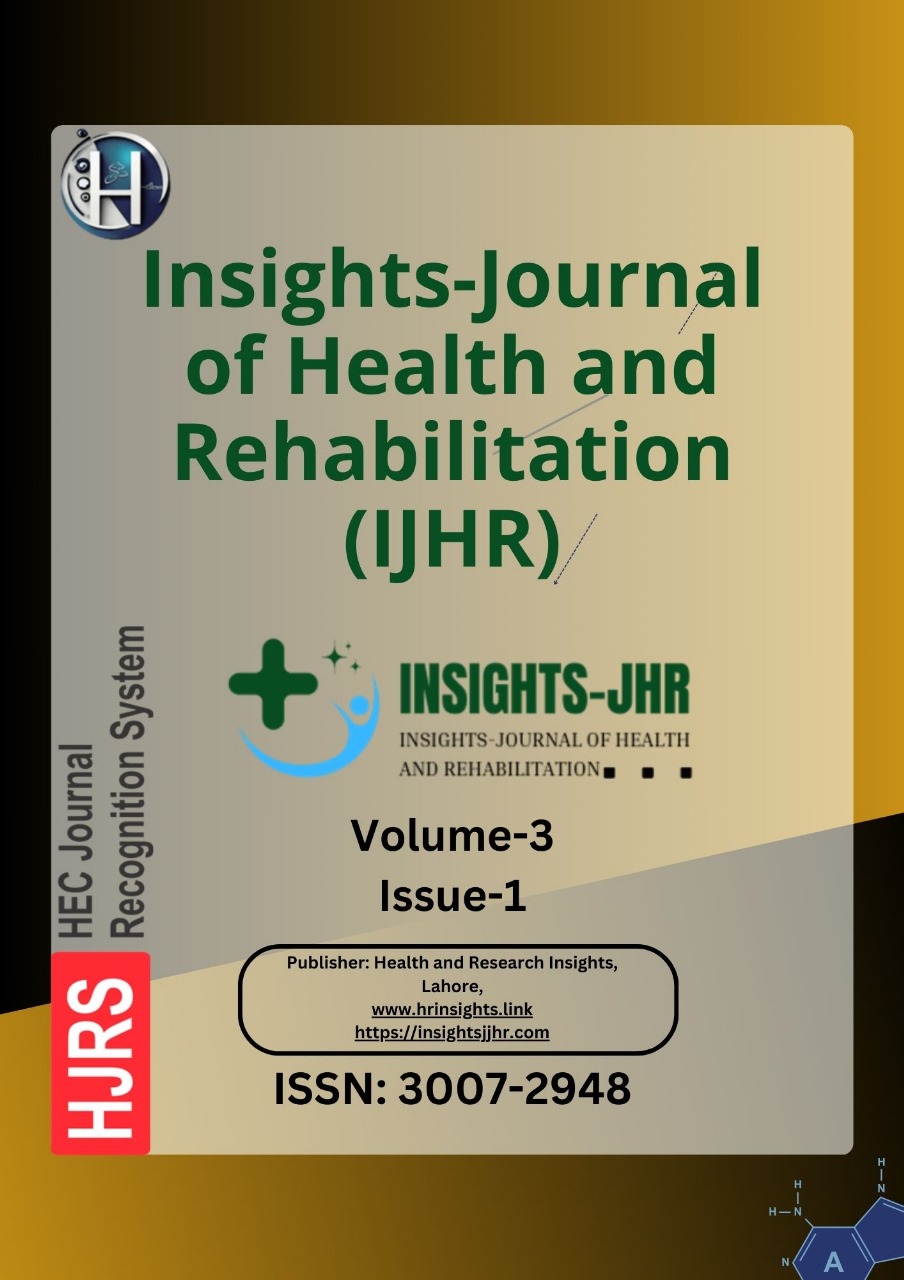COMPARATIVE EFFICACY OF KINETIC CHAIN EXERCISES VERSUS ISOLATED ROTATOR CUFF STRENGTHENING AMONG SHOULDER IMPINGEMENT SYNDROME PATIENTS
DOI:
https://doi.org/10.71000/tjycnk55Keywords:
Exercise Therapy, Kinetic Chain, Pain Management, Range of Motion, Rotator Cuff Injuries, Shoulder Impingement Syndrome, Shoulder RehabilitationAbstract
Background: Shoulder impingement syndrome (SIS) is a prevalent musculoskeletal disorder characterized by compression and irritation of the rotator cuff tendons beneath the acromion, leading to pain, restricted range of motion (ROM), and functional impairment. Rehabilitation strategies such as kinetic chain exercises (KCE) and isolated rotator cuff strengthening (IRCS) are commonly employed to restore shoulder function and alleviate symptoms. However, limited research directly compares their effectiveness in improving pain, disability, and ROM outcomes in SIS patients.
Objective: To compare the efficacy of kinetic chain exercises versus isolated rotator cuff strengthening in improving pain, disability, and ROM among patients with shoulder impingement syndrome.
Methods: A quasi-experimental study was conducted on 36 patients diagnosed with unilateral SIS, recruited via purposive sampling from Services Hospital and Sir Ganga Ram Hospital, Lahore, between March 2024 and September 2024. Patients aged 18 to 40 years with a minimum three-month history of shoulder pain and positive Neer or Hawkins-Kennedy test were included. Patients with traumatic shoulder dislocation, inflammatory conditions, neurological disorders, or recent corticosteroid injections (within three months) were excluded. Participants were allocated into two intervention groups: Group A (n = 18) received kinetic chain exercises, while Group B (n = 18) performed isolated rotator cuff strengthening exercises for 8 weeks. Functional outcomes were assessed using the Shoulder Pain and Disability Index (SPADI) and goniometry, with SPSS version 24 utilized for statistical analysis.
Results: Both interventions significantly improved pain and disability scores (P < 0.005 for all parameters). SPADI Pain scores decreased from 30.0% ± 3.5 to 15.0% ± 2.8 in Group A (T = +5.200, P = 0.007) and from 31.2% ± 4.1 to 22.0% ± 3.5 in Group B (T = +4.300, P = 0.015). Similarly, SPADI Disability scores improved from 32.5% ± 3.8 to 20.8% ± 2.7 in Group A (T = +4.700, P = 0.009) and from 32.0% ± 3.9 to 23.0% ± 3.2 in Group B (T = +3.900, P = 0.017). ROM gains were superior in Group A, particularly in external rotation (32.0° ± 4.2 to 65.0° ± 4.0, P < 0.001) and internal rotation (40.0° ± 5.0 to 75.0° ± 4.5, P < 0.001).
Conclusion: Both kinetic chain exercises and isolated rotator cuff strengthening exercises were effective in reducing pain and disability in SIS patients. However, kinetic chain exercises demonstrated superior improvements in ROM and overall functional performance, making them a more comprehensive rehabilitation approach for managing shoulder impingement syndrome.
Downloads
Published
Issue
Section
License
Copyright (c) 2025 Ghalia Safdar, Syed Muhammad Kumail, Nayab Naveed, Yasir Ali Kazmi, Umber Nawaz, Muhammad Sarfraz, Zeeshan Javed (Author)

This work is licensed under a Creative Commons Attribution-NonCommercial-NoDerivatives 4.0 International License.







